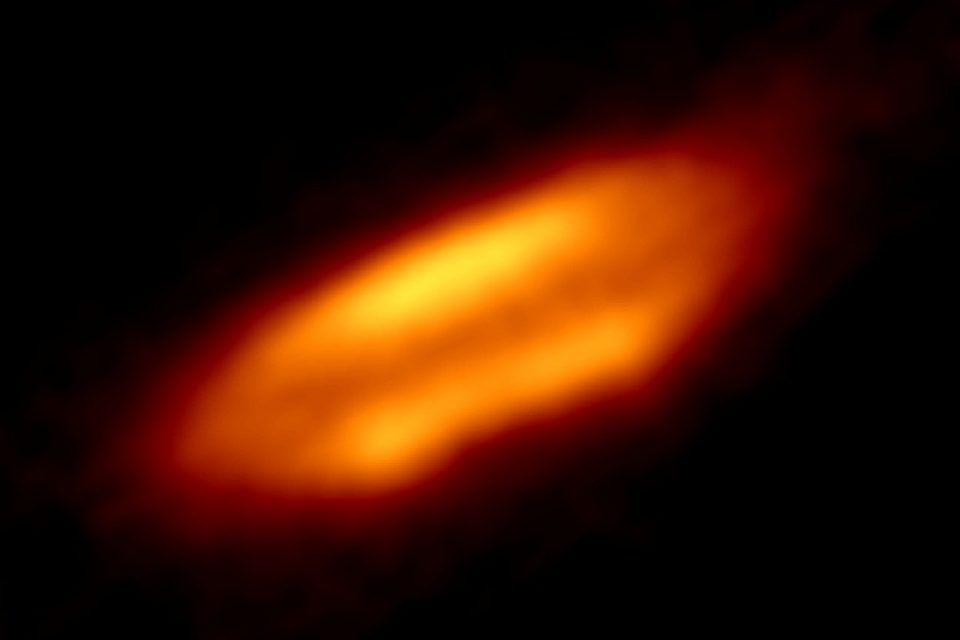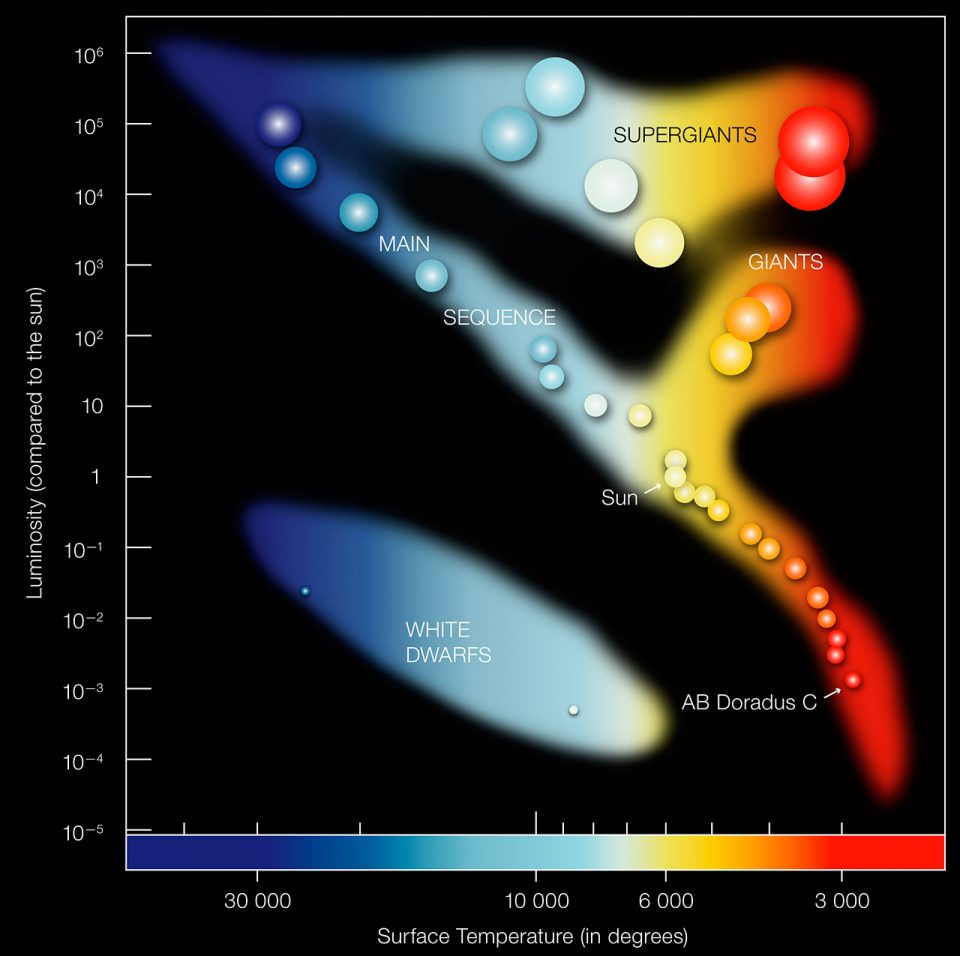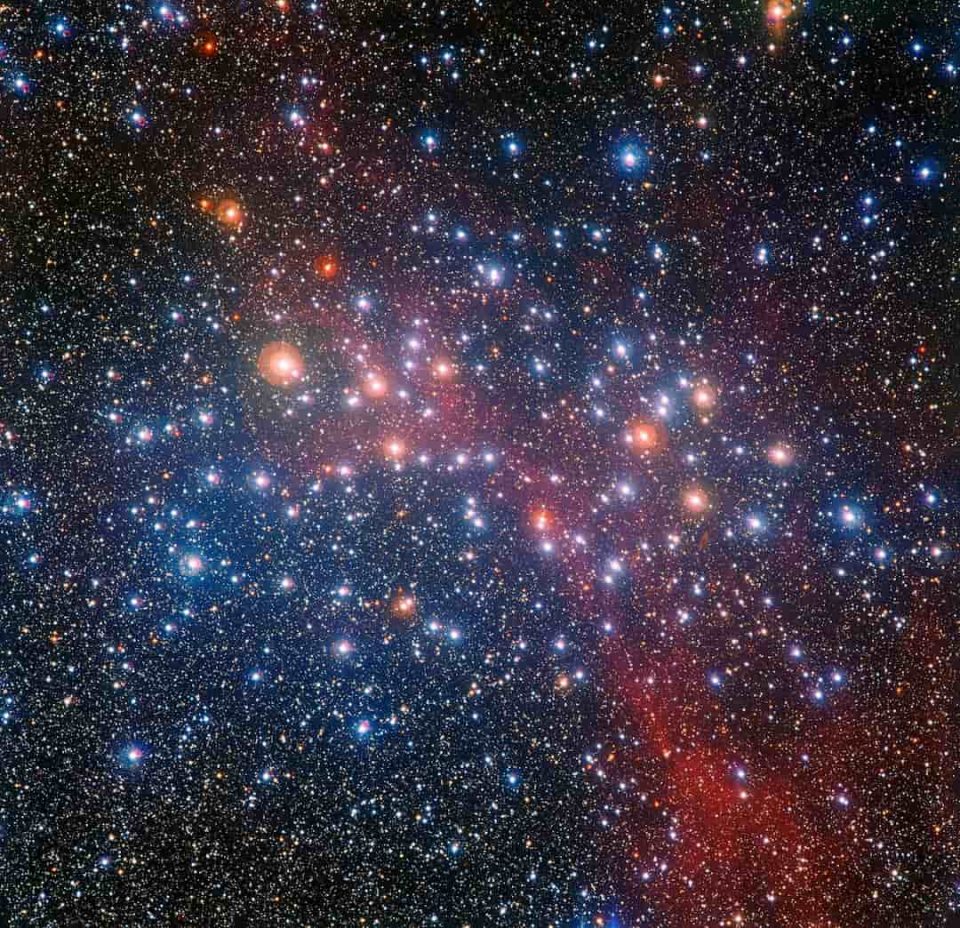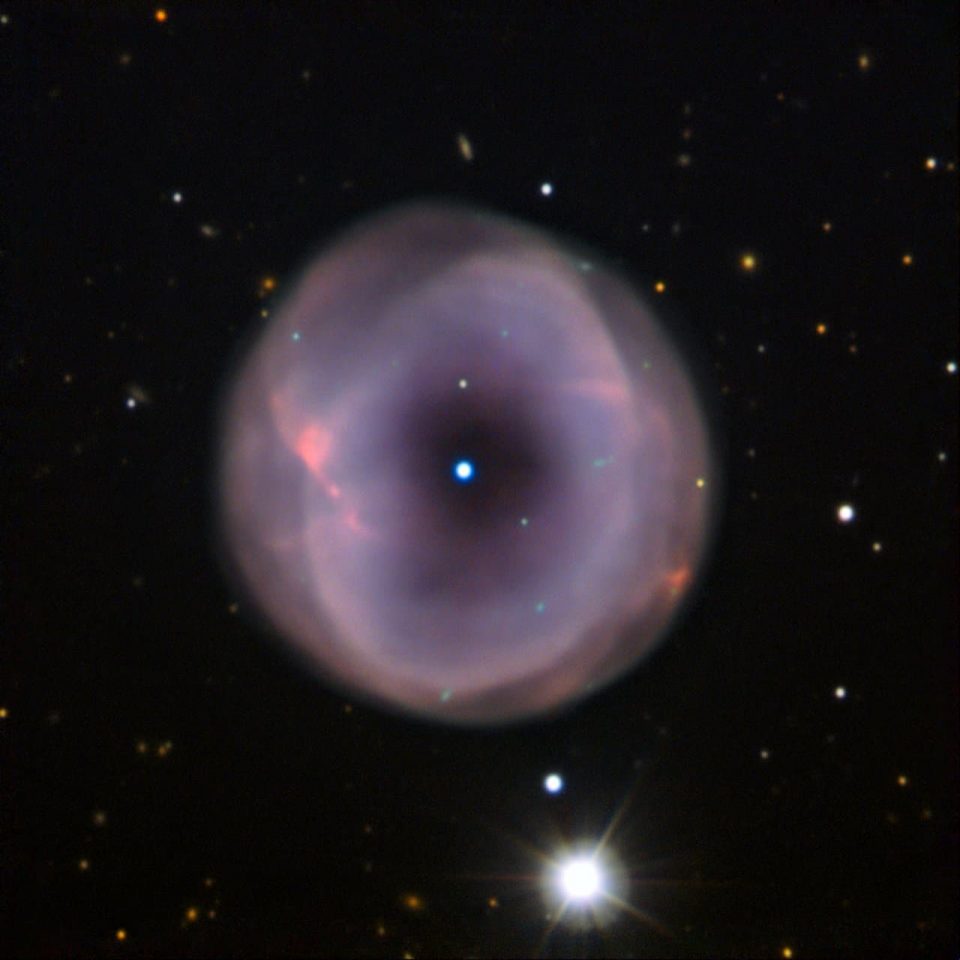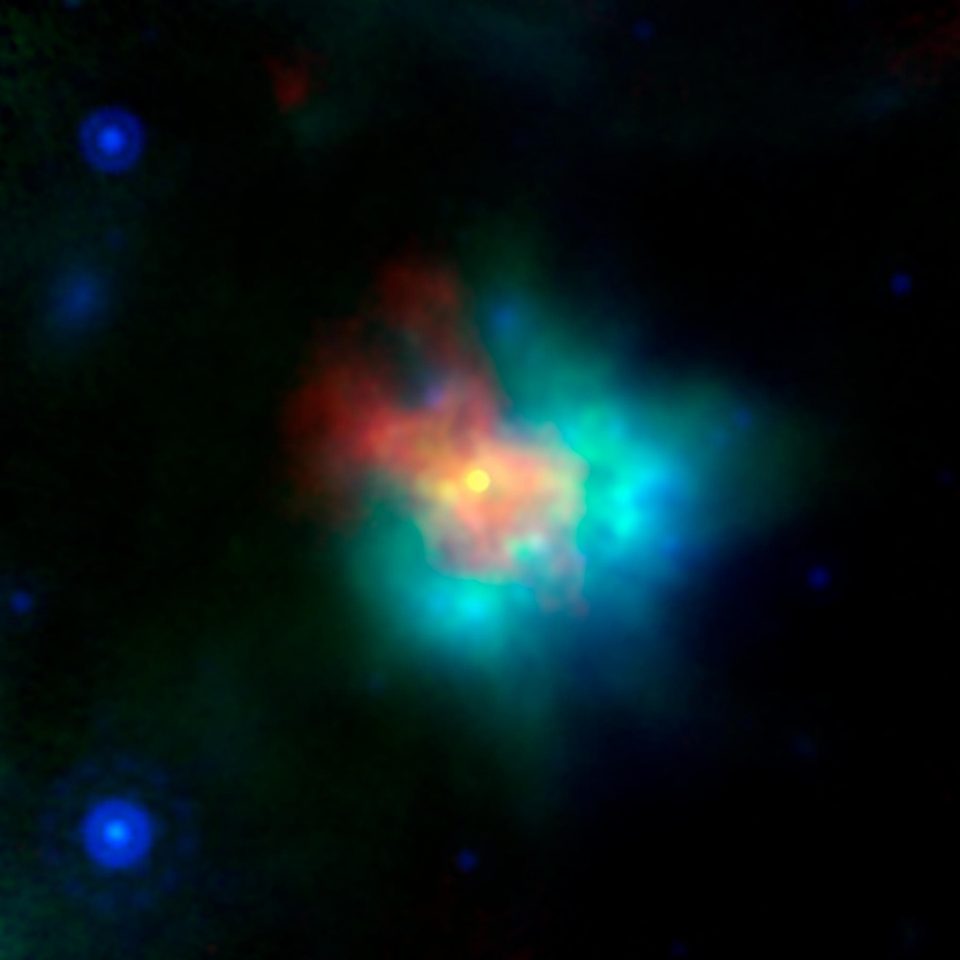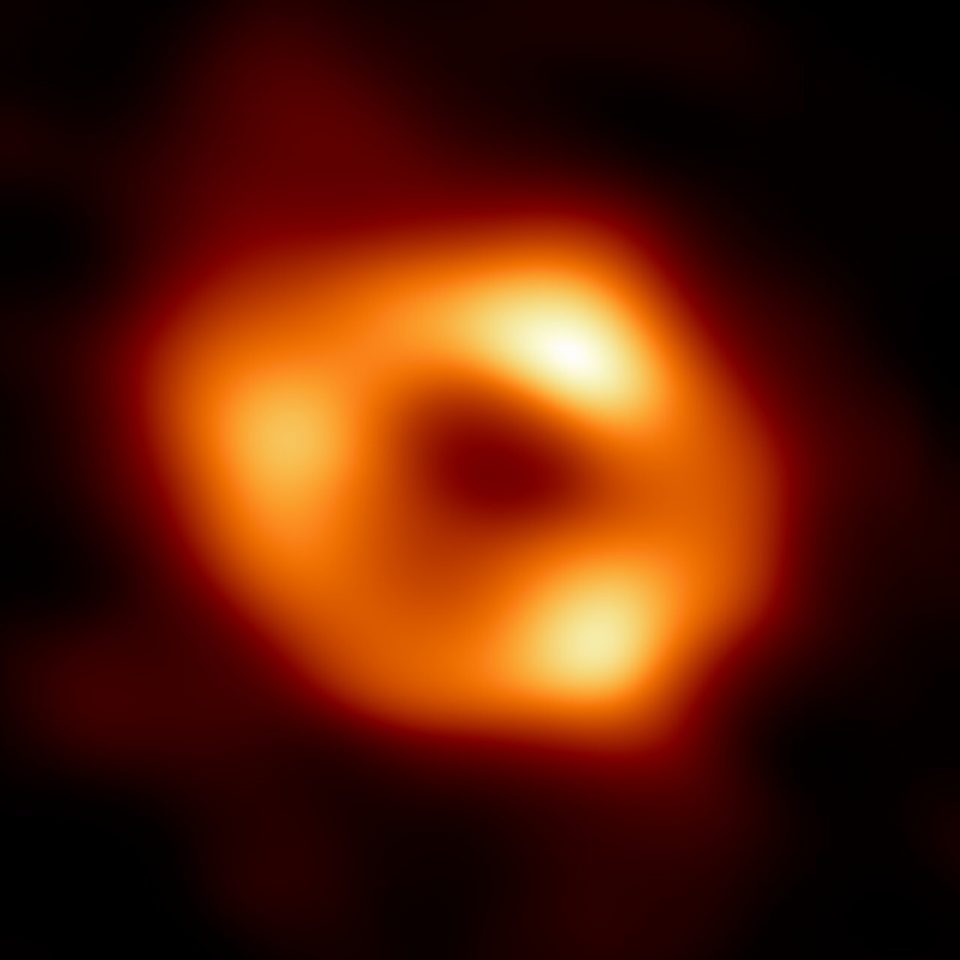
The Life Cycle of a Star
Stars lead lives that test the human imagination. A stellar life can be long enough to watch the entire natural history of Earth play out multiple times. Over that time, a star will be a cloud of gas, a massive ball of fiery plasma, a white-hot shell of its former self, and possibly even a light-gobbling black hole. Kids exploring the cosmos might find themselves orbiting a star at any stage of its life and wonder how it got that way.
During the life cycle of a star, countless incredible things happen around it—the wild, chaotic formation of planets, the gentle passage of comets, and the evolution of planets and their moons through their own life cycles. Some lucky stars, like the Sun, may even see the development of intelligent life that builds satellites and probes to investigate them!
Stages of a Star
Every star begins life by moving through four stages:
- Star formation in a cosmic nursery known as a nebula
- Childhood as a protostar
- Ignition into a main sequence star
- Cooling off and expansion as a red giant
Nebula
Nebulas—huge clouds of gas between the stars—take many forms. Some are dark shapes that blot out the light behind them like ghostly monsters. Others glow because the gas inside them gives off light, or starlight reflects off or passes through them. Formed when a dying star explodes or when the swirling motion of a galaxy creates a concentration of interstellar gases, they are some of the most breathtaking, and famous, parts of the universe.
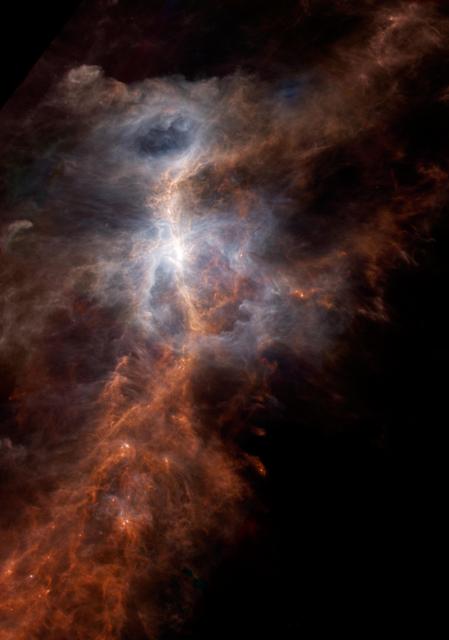
Nebulas are also where stars are born. In the image of the Orion Nebula above, the red stars in the lower-left corner are baby stars.
Stars form inside nebulas because nebulas contain lots of hydrogen, the gas stars are mostly made of. Within nebulas, gravity pulls clumps of hydrogen together. Because the gravity of any object, including a ball of hydrogen, grows as it gets bigger, those clumps start attracting more and more gas. Over long periods of time, they draw so much gas to themselves that they become round and condense into a protostar.
Protostar
Protostars are huge clumps of gas and dust that aren’t quite hot enough to achieve fusion in their core. A protostar starts off looking like a cloud, but as gravity pulls it tighter and tighter together, it heats up and begins to glow. Eventually the star reaches 15 million degrees Fahrenheit, so hot that the hydrogen atoms in its core begin fusing into helium.
At the center of this image, a protostar in the Orion Nebula is heating clouds of gas as it gobbles them up.
The larger the star, the shorter the protostar stage. Big stars might only be a protostar for around a million years. A medium-sized star like the Sun might take 50 million years to begin fusion, and the smallest stars take over 100 million years.
Main Sequence
Once a star begins fusion, it becomes much more stable and enters the main sequence of its life cycle. The incredible amount of energy it releases stops gravity from pulling it any tighter together. As long as it has enough hydrogen in its core to keep fusion going, a star stays in the main sequence.
The Hertzsprung-Russell diagram shows how different stars can look while still remaining in this stage of their lives.
How long a star stays in the main sequence depends on its mass, but stars typically keep fusing hydrogen in their core for billions of years. That’s long enough for planets to form and, on Earth at least, for life to emerge and evolve from soupy bacteria into complex animals like dinosaurs and human beings. The Sun is right in the middle of its main sequence. It’s four-and-a-half billion years old and will probably keep on fusing hydrogen in its core for another five billion years!
Red Giant
After a star runs out of hydrogen, its life changes dramatically. The fusion reaction that kept it in the main sequence for billions of years ends. The star begins fusing helium into carbon instead, and this nuclear reaction makes its outer layers so hot that they begin fusing hydrogen, which expands them. A star in the red giant stage can be several hundred times larger than it was in the main sequence.
The reddish-orange stars in this image of the star cluster NGC 3532 are red giants.
Because red giants are so big, they have a much larger surface area to radiate away the energy from all the fusion going on inside them. This makes them cooler overall. Hot stars glow blue-white or white, cooler stars glow orange or yellow, and the coolest stars are red, which is why these giants give off a red glow.
How Stars Die
Although all stars are born the same way, how they die depends on their size. Most stars run out of fuel and become white dwarfs, but a few generate massive explosions so big they can be seen with the naked eye. The biggest stars turn into black holes—spheres of matter so dense that not even light can escape their gravity.
White Dwarfs
In stars up to one and a half times more massive than the Sun, the star’s core eventually runs out of helium to fuse into carbon. Its outer layers blow away into space one at a time over about 10,000 years and become a planetary nebula. What’s left of the star becomes a small white dwarf at the nebula’s center. White dwarfs are very hot at first, but over billions of years they cool off until they become black dwarfs and no longer shine.
In this image of the planetary nebula IC 5148, the white dwarf that created the nebula is so hot it looks blue-white. Eventually it will cool and appear white.
White dwarfs are hard to see, but there are a lot of them—scientists estimate that almost all stars (94% or more) become white dwarfs when they die.
Supergiants and Supernovas
But if small stars die with a whisper, large ones die with a bang. During the red giant stage, they become supergiants, some of the largest stars in the sky. Then they explode in a supernova.
Supergiants live short, brilliant lives. They can shine up to a million times as brightly as the Sun, but may only last for a million years. Their temperatures are so extreme that all kinds of fusion happens inside them—not just hydrogen into helium and helium into carbon, but carbon into many heavier elements. Fusion continues until the supergiant’s core becomes iron.
Iron doesn’t release energy when it fuses, so once the core is iron, the careful balancing of energy versus gravity in the star disappears. Gravity wins and the supergiant collapses in less than a second. That catastrophic collapse makes the star’s core so hot that its atoms explode in a gargantuan burst called a supernova. Supernovas are so powerful that the brightest in Earth’s recorded history was said to light up the landscape like the moon.
The dazzling arms of the Crab Nebula are the remains of a supernova that occurred in 1054 A.D.
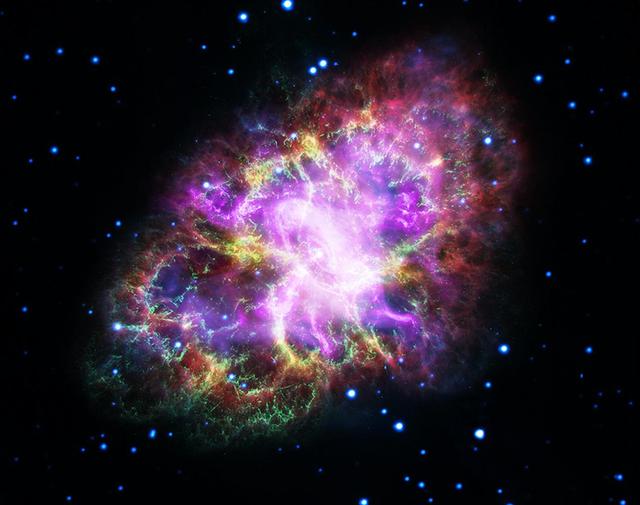
Black Holes and Neutron Stars
If a star is massive enough (at least one-and-a-half times as massive as the Sun), its core can survive a supernova and become something very different: a neutron star or a black hole.
Neutron stars are really, really dense. They’re about the same size as a city—12 miles or so across—but they pack half a million Earths’ worth of matter into that space. Although that creates a lot of gravity, radiation can still escape them. Astronomers can see neutron stars when they emit X-rays or a strong magnetic field.
In this image of the neutron star G54.1+0.3, X-rays are colored yellow, radio waves are colored red, and infrared light is colored green. It’s those powerful X-rays that make the star detectable!
Black holes, on the other hand, are created when stars at least three times as massive as the Sun die. They’re so dense that their gravity traps all radiation, from radio waves to visible light to X-rays and beyond. Most black holes are relatively small, but at the center of every galaxy is a supermassive black hole, which contains as much mass as millions or billions of stars!
Scientists recently captured this image of the supermassive black hole at the heart of our galaxy. The dark space in the center of the image is the black hole, and the light ring around it comes from a disk of gas surrounding it heating up as it gets pulled in.
There’s a lot to know about the life cycle of a star. From nebula to protostar, through the main sequence to red giant before ending as a white dwarf, neutron star, or black hole, our stellar neighbors lead amazing lives. And scientists discover more about them every day! Many of Earth’s most powerful telescopes and satellites are just coming online, and there are new discoveries waiting for them (and you!) around every corner of our cosmic neighborhood.

